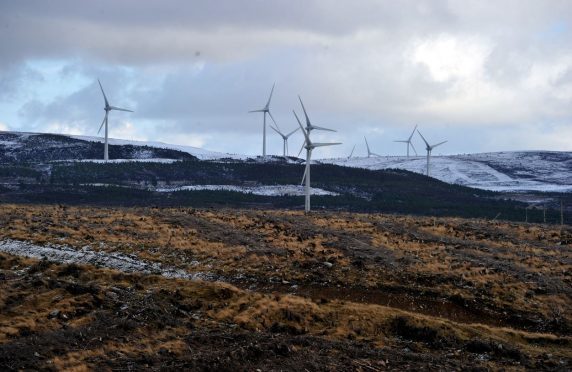Major wind farm applications are being pushed through by ministers despite local opposition, according to official figures.
The Scottish Government has been accused of contempt for local democracy after overturning two in every three wind farm application decisions – 13 out of 23 – in the last year.
One of the most controversial was the approval of Creag Riabhach windfarm application for 22 turbines on the Altnaharra Estate near Lairg, which is on designated Wild Land, although this has now been sent for judicial review.
Another is the expansion of Hill of Towie windfarm near Keith, rejected by Moray councillors but approved by ministers last month.
A dozen turbines at Carn Ghriogair in Aberarder were rejected by Highland councillors but also pushed through by ministers.
Scottish Conservative energy spokesman and MSP for Aberdeenshire West, Alexander Burnett, said a worrying pattern was emerging.
He said: “These figures expose the SNP’s unacceptable habit of constantly overturning council decisions.
“In the cases of windfarms, local authorities will have carefully considered the applications, listened to the views of local residents, and rejected the bid accordingly.
“It’s extremely worrying that ministers in Edinburgh then see fit to call the shots on these cases and force through unpopular SNP policy.”
But Scottish Renewables chief executive Niall Stuart said the renewables argument was stronger than nimbyism.
He said: “Onshore wind provides the bulk of Scotland’s green energy – displacing millions of tonnes of carbon emissions each year – and supports thousands of jobs across the country.
“Scotland’s planning processes are rightly designed to strike the correct balance between harnessing our natural resources to produce more renewable energy and protecting our most cherished and important landscapes.
“Record levels of renewable power output alongside record tourism numbers and 73% support for onshore wind all suggest the Scottish Government is getting the balance right.”
A Scottish Government spokesman said “clear planning policies” were in place to ensure wind farms are only developed in “appropriate locations”.
“Planning reporters consider all relevant information and representations received from members of the local community.
“They are required to determine appeals in accordance with the local development plan unless material considerations indicate otherwise.
“Scottish planning policy was strengthened in 2014 to provide additional protection for both our National Parks and National Scenic Areas. Additional scrutiny of proposals affecting wild land areas has also been introduced.”
